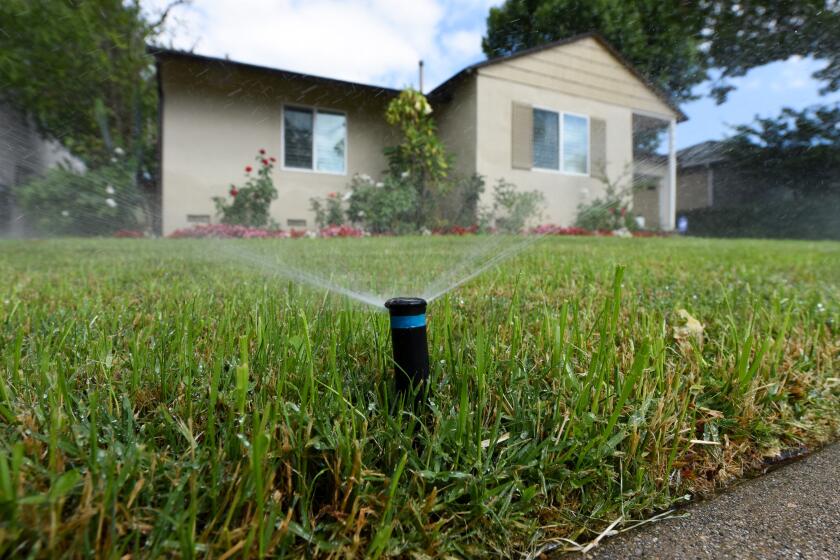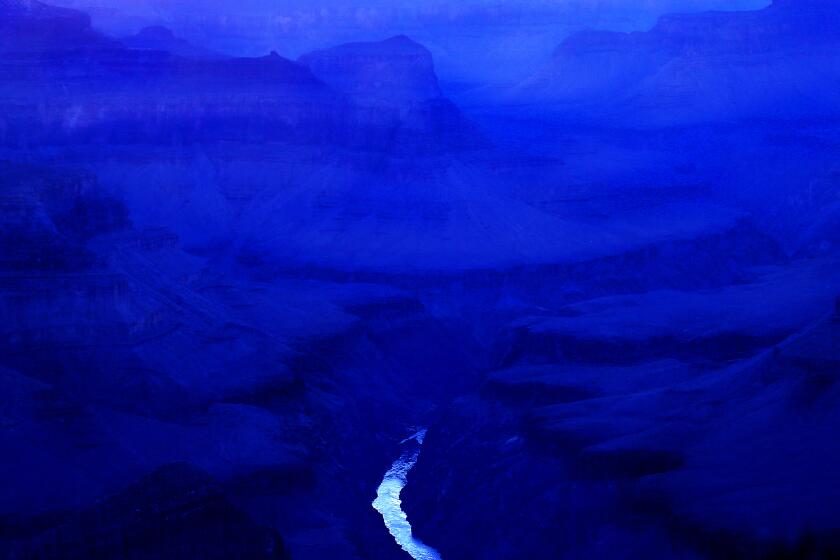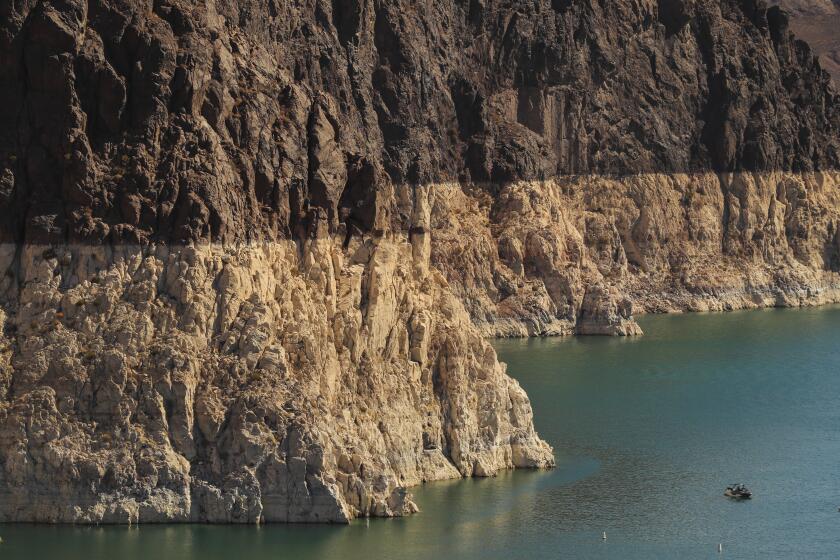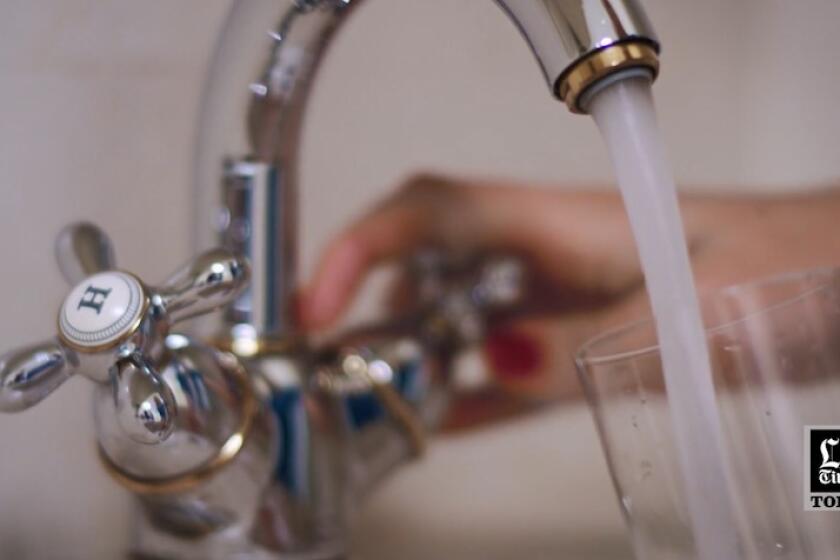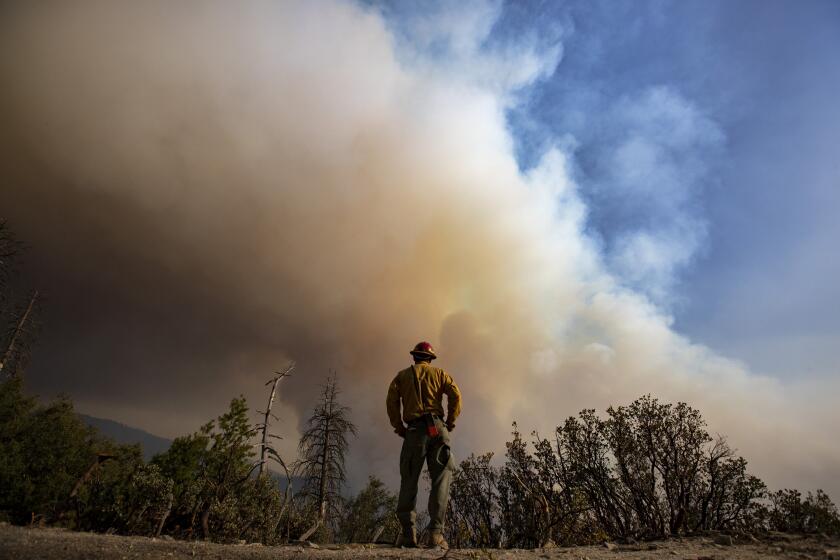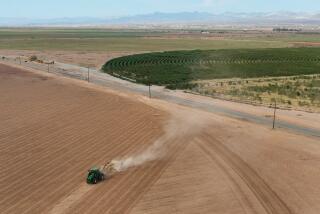A âno snowâ California could come sooner than you think
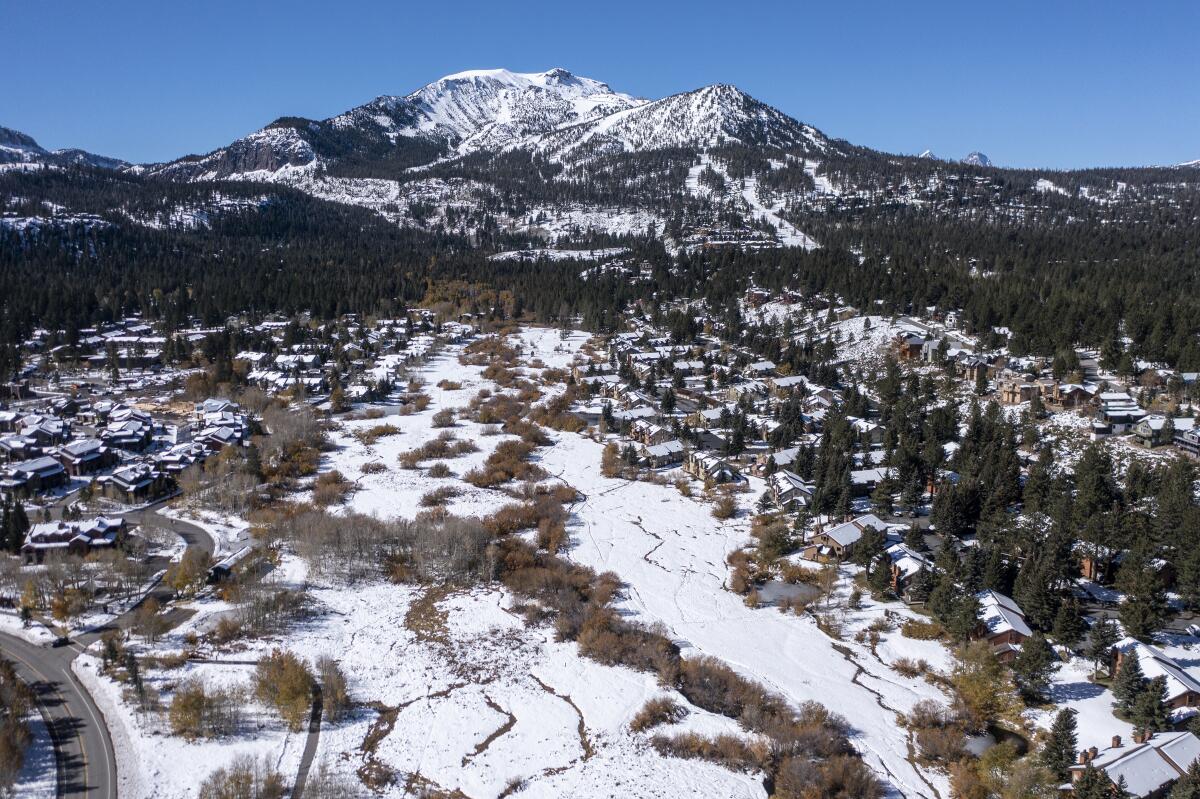
It was 55 degrees and sunny Thursday at Sugar Bowl Resort, where the opening day of the 2021 ski season â already delayed because of warm weather â was still listed as âTBD.â
âWinter hasnât quite arrived in Tahoe yet,â officials wrote in a note about the postponement. âThe team will be working nightly and ready to flip the switch when Mother Nature cooperates.â
But the mountain isnât the only place feeling the pinch from lack of snow. A new study led by researchers at the Lawrence Berkeley National Laboratory found that dwindling snowpack across California and the western United States could shrink dramatically more â or in some cases disappear â before the end of the century.
The study, published recently in the journal Nature Reviews Earth and Environment, paints a worrisome picture of the âpotentially catastrophic consequencesâ of a future with less snow, including the massive implications it holds for Californiaâs water supply, as well as rippling effects on soil, plants, wildlife and even the increased frequency of wildfire.
Should greenhouse gas emissions continue unabated, the study found, winters of low snow, or even no snow, could become a regular occurrence in as little as 35 years.
The projections âare a little bit shocking,â said Alan Rhoades, a hydroclimate research scientist and co-author of the study. âAs a kid who grew up in the Sierra, itâs kind of hard to fathom a low- to no-snow future.â
Gov. Newsom declared a statewide drought emergency Tuesday, as officials announced that Californians reduced water use an average of 5% in August.
In many ways, the changes have already begun. California this year experienced its hottest summer on record, while Los Angeles and San Diego both just saw their driest Novembers in decades. The entire state is also under a drought emergency.
But the paper is the first to synthesize âany and every available studyâ of future snowpack projections to construct a more confident timeline, said Erica Siirila-Woodburn, a research scientist at the Berkeley Lab and another co-author of the study.
Many of the worst effects will be felt in California, she said, where snowpack in the Sierra Nevada and Cascade ranges could decline 45% by 2050, compared with about 25% in other western ranges such as the Rockies and the Wasatch-Uinta.
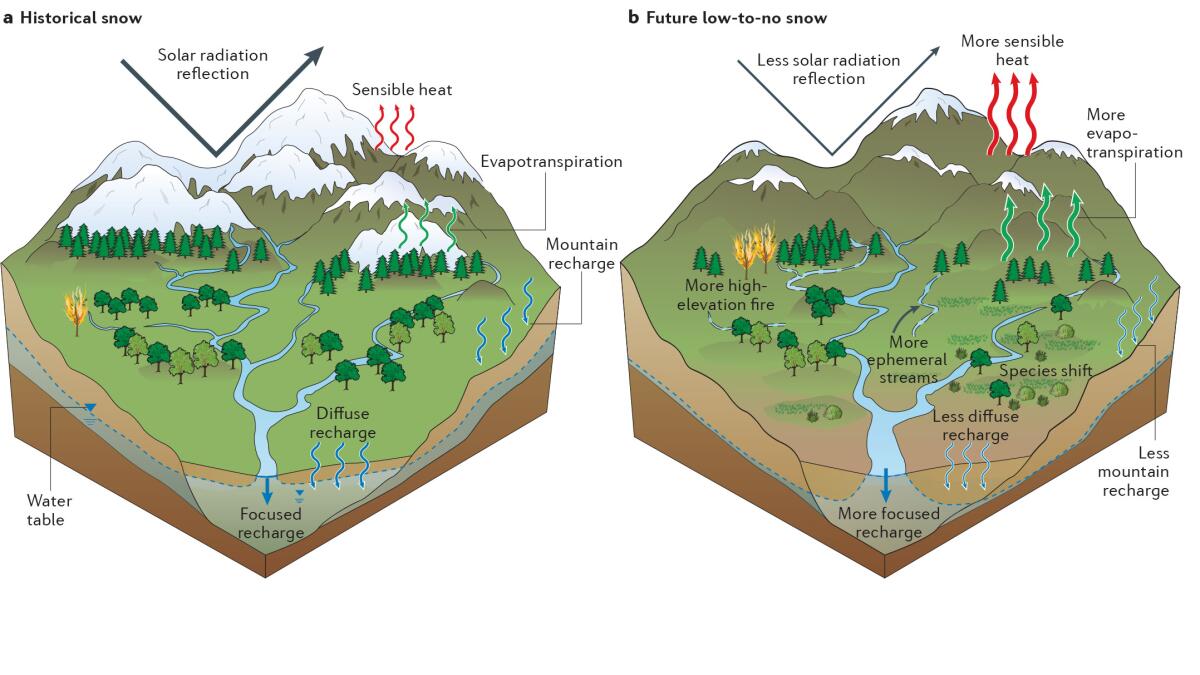
Jeffrey Mount, a water scientist at the Public Policy Institute of California who did not work on the study, said that level of snow loss could fundamentally alter life in the Golden State, where mountains have historically served as a critical resource for regional water supplies by capturing, storing and releasing moisture downstream.
âBelieve me, we all read it,â Mount said of the study, noting that California has âbuilt an entire water supply system around the reliable appearance of snowpack in our mountains.â
Crucially, he said, the steady, slow melting of snow each spring and summer has long acted like a time-release that provides more water at a moment when precipitation tends to stop and demand begins to surge.
Snowpack on April 1, when it is typically its deepest, was only 60% of its average this year, according to the California Department of Water Resources.
âIf the snow is not going to melt off in the spring like it used to, weâve got some major challenges for how we operate our reservoirs,â Mount said, âbecause itâs all built around them. Everythingâs built around them.â
To water resiliency advocates at the U.N. climate conference, the Colorado River stands out as âthe best example globally of how things can go badly.â
But snow loss wonât affect only water supplies. The researchers described a âcascade of implicationsâ that could shift the stateâs soil, plants and wildlife and also negatively affect forest productivity and ecological health. It could also increase the risk for flash floods and debris flows, as well as the prevalence and severity of wildfires, they said.
âItâs hard to disentangle this really interconnected system, in terms of all these different places where water hooks to different parts of the environment,â Siirila-Woodburn said. âItâs really this holistic system that we have to think about jointly.â
The researchers defined âlow snowâ as when the snowpack (or snow water equivalent) falls below the 30th percentile of the historical peak. âNo snowâ is when that number falls below the 10th percentile.
California has already seen bouts of both, such as when snowpack in the Sierra dropped to an unprecedented 5% of normal in 2015. But the state could start to experience âepisodic periodsâ â or five consecutive years â of low to no snow as soon as the late 2040s, researchers said.
Persistent periods, or 10 consecutive years, of low-to-no snow could arrive in California by the 2060s. In other parts of the western U.S., persistent periods donât emerge until the 2070s.
âWe can maybe manage around two years, three years of low- to no-snow,â Rhoades said, âbut when you start to get five years ... or that persistent 10 years, I think that starts to undermine some of the historical management strategies that have been used.â
Lake Mead is at the lowest water levels in its 85-year history. Federal officials who manage the lake expect to soon declare a water shortage.
The reasons for snow loss are myriad, but most are tied to climate change. Warming temperatures mean more precipitation is falling as rain instead of snow â and rain has less water storage potential than its colder counterpart, Rhoades said.
Whatâs more, many of the storms that do bring moisture to California come across the warm Pacific, while other ranges such as the Rockies get colder storms that move in from the northern Arctic. And with a lower average elevation than some other western ranges, the Sierra also have a harder time maintaining snow levels.
The researchers hoped their findings could be a âcall to actionâ that will spur residents, policymakers and innovators to elevate snow loss to the level of other climate hazards like sea level rise and wildfires, which tend to make more headlines, they said.
âThis isnât some hypothetical make-believe future,â Siirila-Woodburn said, noting that snowpack in the region has already decreased by about 20% since 1950 â the equivalent of the storage capacity of Lake Mead, the nationâs largest reservoir. âThis is something thatâs already happening now.â
One high-emission climate model used in the study found that as few as 8% of the years between 1950 and 2000 would be classified as having low to no snow in the western United States. Between 2050 and 2099, that number could soar as high as 94%.
As drought persists, Californians reduced water use 3.9% in September. That reduction was smaller than in August, when Californians used 5% less.
But there are solutions, including water conservation, infrastructure investments, desalination and, crucially, reducing greenhouse gas emissions, the researchers said. Aggressive forest management will also play a key role because less dense forests allow for deeper snowpack.
John Andrew, deputy director of climate resilience at the California Department of Water Resource, said via email that it will require an âall of the aboveâ approach to slow the trend.
âWith a state as diverse as California, there is simply no âone-size-fits-allâ solution â it will take a portfolio of diverse strategies, implemented primarily at the regional level,â Andrew said.
âThat said, there is obviously a high priority currently on responding to the drought, with a particular emphasis on assisting small, rural communities that do not have access to safe and affordable drinking water,â he added.
Also of critical importance are adaptation strategies, including techniques to store excess surface water underground for later use, the researchers said.
Forecast-informed reservoir operations, which use weather and water forecasts to inform decisions about retaining or releasing water from reservoirs, also show promising signs of increasing water storage in California.
The approval of $15 billion to address the worsening effects of global warming was announced amid Climate Week
Yet there is still much to be done. In September, Gov. Gavin Newsom allocated more than $5 billion of his $15-billion climate package toward drought response and water resilience â but in the same month, Californians backslid in their efforts to conserve water.
âDecreasing snowpack is one of several challenges facing California water managers, including aging infrastructure and declining ecosystem health,â Andrew said, adding that âwater conservation should be a way of life in California.â
Still, the researchers said they hoped their study would inspire less âdoom and gloomâ and more discussion of solutions â particularly since their findings were primarily based on a high-emission scenario that is not yet inevitable.
Water managers and policymakers have already reached out about incorporating the studyâs findings into their work, they said.
But though budgets, infrastructure, legislation and conservation can all be improved upon, the necessary conditions for that Sierra snow Rhoades played in as a kid are admittedly harder to come by in a warming world.
Unfortunately, he said, âthe freezing point of water is non-negotiable.â
More to Read
Sign up for Essential California
The most important California stories and recommendations in your inbox every morning.
You may occasionally receive promotional content from the Los Angeles Times.
